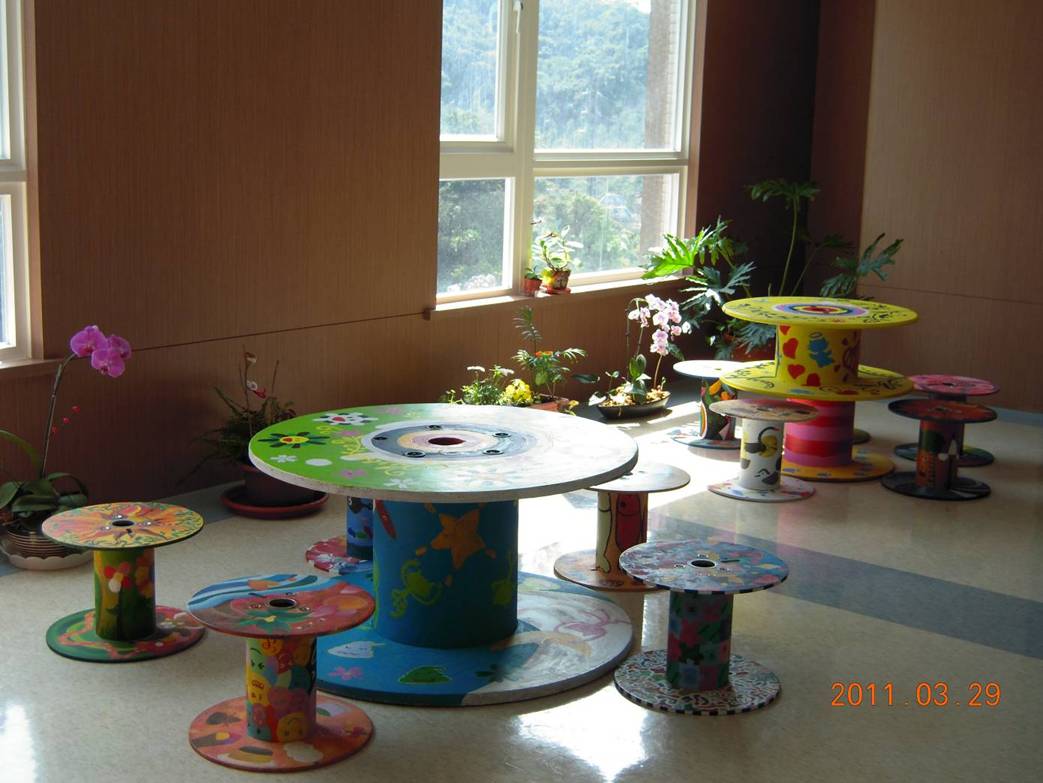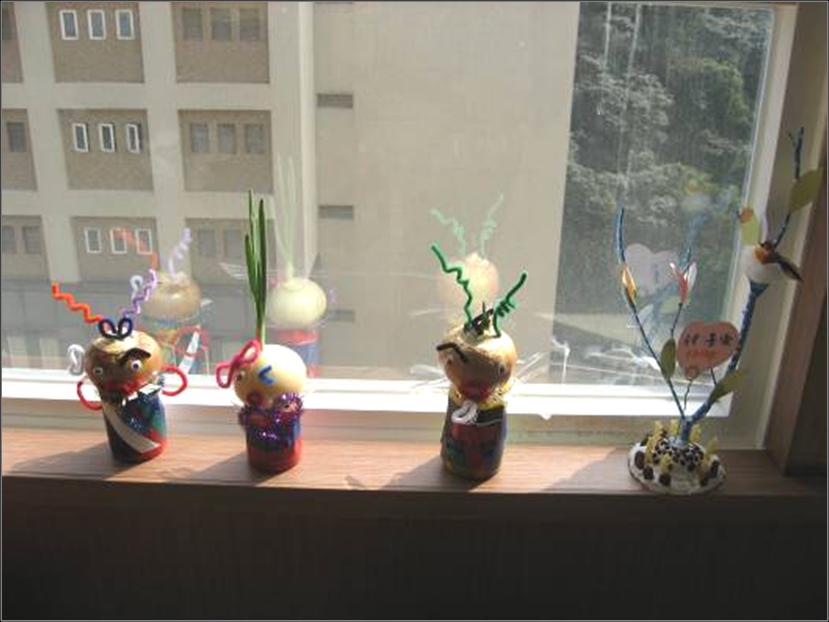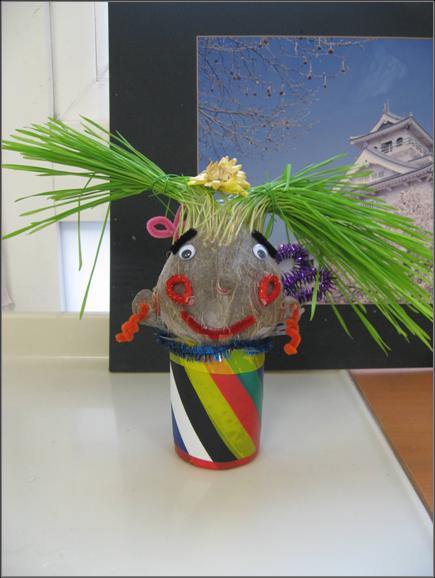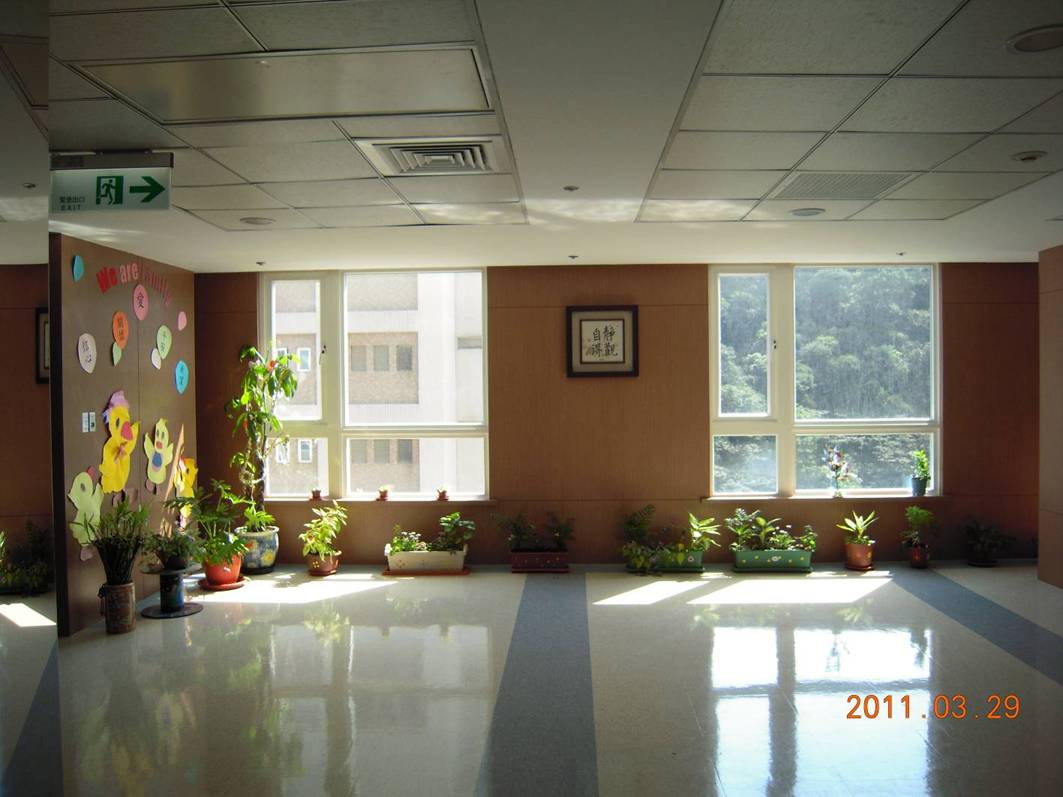The application of horticultural therapy in the hospice ward

In the blink of an eye, six years of commitment has flown by as I have led the horticultural therapy group in the hospice ward at Chang-Geng Memorial Hospital. This all began with a question on a phon call I received from a social worker in 2009 asking: “How can we bring horticultural therapy into the hospice ward?”
This got me thinking: “How can horticultural therapy help patients in the final stages of their lives?” This therapy encourages patients to participate in gardening work for the wellness of their bodies, minds, and souls. With palliative patients who might not have enough strength to leave their beds, I wonder how I can impress them with horticultural therapy, so that they might be inspired and comforted.
It is not just about company

My doubts were answered by reading Florence Nightingale’s Letters from the Crimea. Nightingale’s words have enlightened me, that is, isn’t the whole point of horticultural therapy to bring nature to those who can’t leave hospitals? That way, they can still enjoy the comfort and joy of flowers and plants even though they are unable to reach nature by themselves.
With the support of social workers and the head nurse, I started exploring and observing what horticultural therapy can do for the palliative care unit. In these past six years, I have started to understand why the head nurse once told me: “The hospice ward is not a place for patients to await their death; these patients don’t just need company, but a true and heartfelt companionship."
What they have taught me
One day when we were about to show patients how to tie a moss ball that carried our wishes for their loved ones, a feeble patient with a nasogastric tube was wheeled into the room by his attendant. We invited the patient to join us, but he shook his head and hid behind the curtains in order to observe us. We didn’t want to force him to join, so we invited his attendant instead by chatting together.
I said to them: “We are going to tie a moss ball today. It is very easy to care for and you can send it as a gift. Have you thought of anyone you would like to give it to?”
“Oh, how about sending this to your sister?” the attendant asked the patient.
This suggestion seemed to arouse the patient’s interest, and he leaned over despite still having doubts if he could finish the task. With the volunteers’ help, he was not only able to tie a moss ball, but also wrote “I love you, sis” on a blessing card to express his love and gratitude.
Later, a married couple walked in with worried faces. They said little to each other, but did tie a moss ball with blessings for their daughter. On their cards, they wrote: “To baby: lots and lots of love for you. Dad” and “Baby, no matter where you are, mom wishes you the best. Mom”. It turns out this couple had lost their daughter and were having a difficult time dealing with the loss.
The healing power of plants
One time when we were doing ikebana—a Japanese style flower arrangement—a wary, old lady curiously walked in, and started doing her own ikebana with the volunteers’ encouragement. During the process, she shared with us that she came here to visit a sick relative of hers. When the old lady finished her work, she looked at it and started to smile. I was instantly touched by her smile.
There were also little children who came here to visit their parents or elders in the families. When I see these children, I can’t help but feel sorry for them because they are about to lose a family member. I showed them how to decorate cards with plants and flowers, and send the cards to the people they cared about to express their blessings.
Time and again, whether with children or adults, I have witnessed the comfort and healing power of horticultural therapy, and I am assured of its value and importance to hospice and palliative care.
With the support of the hospital administration, we have placed many indoor plants at the corridor of the hospice ward next to the French windows to make it an indoor garden. As the indoor plants are mostly evergreen plants, every Spring and Autumn season we will bring in some floral plants that are in season to enhance colors. These seasonal flowers can also suggest the change of seasons in the hospice ward.
Since the corridor garden has been set up, we’ve noticed people are starting to walk around more. More patients and family members are willing to step out of their wards to enjoy the plants, or at least sit by the plants to relax and enjoy the scenery. As the elevator doors open, visitors will be greeted by the greens in the corridor garden. We hope with the different layout of the corridor garden, people can be refreshed and cheered up.
Implication of life and blessings
Plants need attentive care, and they will return to you just as much as you have devoted to them. The corridor garden is not big, but all the plants are thriving and in full bloom. Simply by looking at it, people feel its dynamic and vibrant life, and are therefore encouraged and inspired.
In every horticultural therapy class of mine, I insist on everyone writing a blessing card. It could be for yourself, your family, your friends or even for your care attendant. Whomever it may be for, it is a good idea to practice sending your blessings to others.
During the process of creating your work, it requires concentration. Through that, patients can escape from reality and temporarily focus on their work in their own little world. When they finish the work, oftentimes a sense of accomplishment and self-affirmation will result, which surely cheers the low spirits.
Features of hospice horticultural therapy

With multiple attempts and trials, I have concluded the following to be important features of an effective hospice horticultural therapy class (A-I):
A. Hold an individual class, not a series of classes
As every patient’s condition is different and unpredictable, a consecutive course design with seeding and cottage is not appropriate. For example, patients who attend class this week might not be able to participate again next week; the same is true for family members. Thus, it is better to design each class independently in order to allow participants to join spontaneously and to complete their work.
B. Fit for bedside decoration
Every time we are about to start a class, volunteers always go knocking on doors to invite patients to join us; and almost always, there are patients who don’t want to leave their beds. As a result, the volunteers and I will start by ourselves, and later send the plants we’ve completed with our blessings to those patients. Due to the limitations in the ward, we believe the bedside cabinet is the most ideal place for these plants, and thus, the size of the finished work must be small and be able to fit the bedside cabinet. Sometimes when we see these plants end up in the corridor garden, we are reminded that another patient has left this world peacefully.
C. Improve indoor air quality
Wards are mostly closed spaces. Besides relying on air conditioning for indoor air ventilation, having plants like Sensevieria, Yellow Palm, and Devil’s Ivy helps improve indoor air quality.
D. Deliver blessings
Every plant is sent with a blessing card that delivers a message full of mindfulness and encouragement to the patient who receives it.
E. Feel the nature
By staying indoors at a constant temperature, patients tend to forget the seasons. However, by sending patients Spring flowers and Autumn leaves, they are reminded of the changing of seasons.
F. Recall pleasant memories
With different festivals during the year, we also hold many different activities like Chinese New Year’s greetings, Mother’s Day carnation flowers, Dragonboat Festival (Duanwu Festival) fragrant sachets, and Christmas tree decorations. Through these holiday events, patients can recall pleasant memories.
G. Interact in groups
Since every patient has different health conditions and it is challenging to ask everyone to sit through the entire class, we have adapted from a classroom setting to a vendor setting. After setting up the tables and materials, we then invite as many patients as possible to join us. Regardless of how long they will be with us, it is like a miniature version of group therapy in which people share their stories, their troubles or their emotions with us. Whatever they feel like sharing, we are happy to listen.
H. Inspired by botanical vitality
Most of the plants we choose are easy to take care of. Even in small spaces like the corridor or the wards, they grow with vitality, which can certainly influence patients and others.
I. Silent comfort
No matter where you care for your plants, be it at home or in the ward, through the process of caring for the greenery, your heart will be comforted, too.
All of the above features not only remind us to devote more heart into the course design, but we have also discovered that patients along with family members, companions, care attendants, and even doctors, social workers and nurses need to be included. After a year’s horticultural therapy classes, the hospital administration has taken notice of the therapy’s healing power, and has decided to increase the number of classes from once to twice a month. More hospital units have also begun participating, which started with the palliative care unit, but later with the cancer unit and the rehabilitation unit.
What’s worth noticing is that many patients have in fact previously farmed as their occupation or have had a small piece of land to grow vegetables for their retirement. By doing some horticultural activities, it allows them to recall their good memories of working with the soil. For some people, they place value in what they have achieved with farming. Interestingly, people have started to share their stories through farming as they interact with others and get in touch with nature again. This has encouraged the interactions between patients and their families as well as among the patients themselves; it can also count as a Life Review Method.
The complete horticultural works not only brighten the ward with colors, but it also gives the medical team an opportunity to praise patients’ works, and to help them feel a sense of achievement and competency.
As the bond is created between patients and plants, medical team members can invite patients to care for plants by encouraging them to leave their beds. This will serve as wonderful opportunities for them to make friends and to exercise.
All these changes made by the interactions and emotions with plants have made us believe once again, that the palliative care ward is not a place for patients to sit quietly and await their death; but rather, it is a place for them to carry on a meaningful life and see life as worth waiting for and pursuing.

